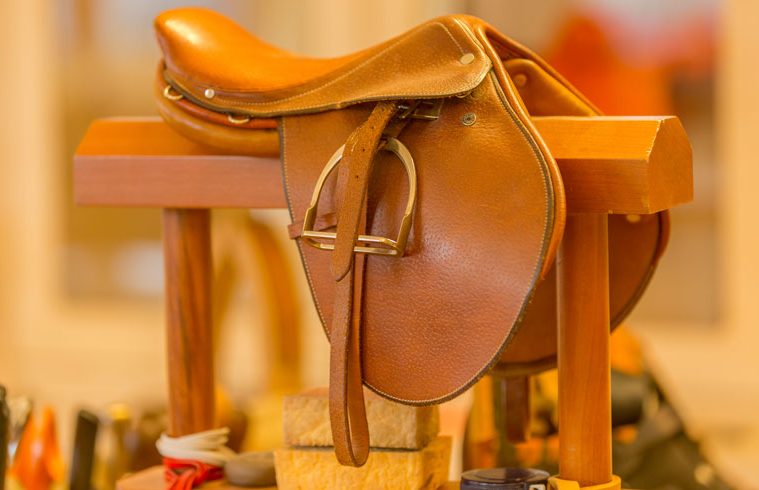PHOTOS BY George Kamper
Published Summer 2013
Access to the Hermès saddlery in Paris is a rare opportunity. When photography director George Kamper and I were invited to visit, we immediately accepted— knowing we would witness the skillful artisans at work, demonstrating the superior craftsmanship synonymous with the Hermès brand.
The saddle-making workshops are perched on the upper floors of Hermès’s 24 rue du Faubourg Saint-Honore store in Paris. One workshop is dedicated to the selection and precision cutting of leather, and the other to saddle making. Once the pieces for the saddle are cut to size and carefully examined for any imperfections, they are delivered to the skilled saddle makers on the floor above.
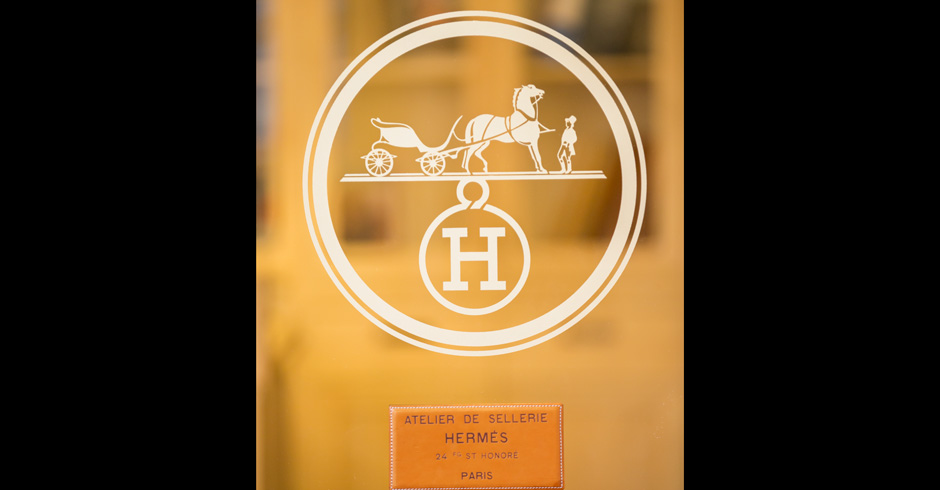
Every Hermès saddle made since then has been recorded and includes a comprehensive list of the saddle specifications, the saddle-maker’s name, and the year the saddle was made. Within the airy studio are rows of saddles and small prototypes that serve as models for the saddle makers. It is abuzz with light hammering, plinking, and the sound of the saddlers gently massaging supple leather into full-sized versions of their smaller counterparts.
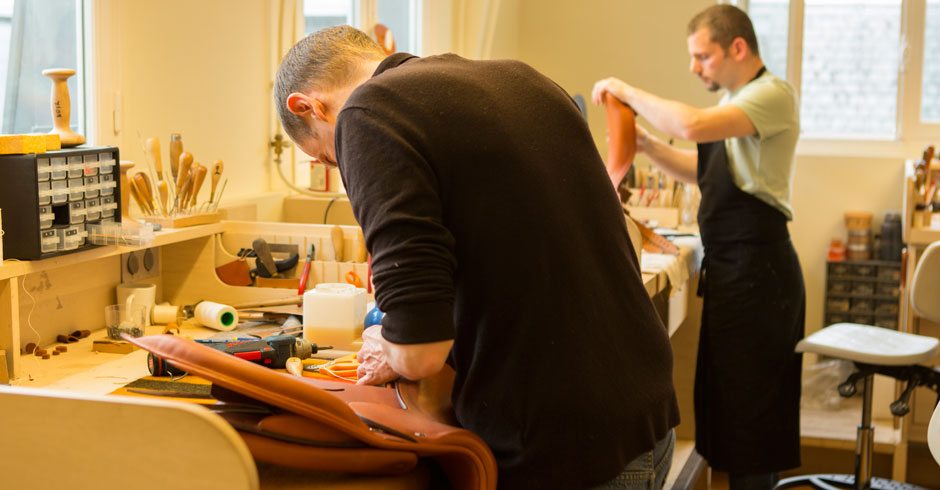
There are currently 13 people in the saddle-making department, and each saddle is made by a single craftsman. The saddles are all assembled and stitched by hand, with the exception of the tree–the internal structure that provides the shape of the saddle.

Saddler Vincent Leopold (above) provided a visual demonstration of how a saddle is constructed, assembling the various components of a saddle in proper sequence. Custom designs are nothing new for Hermès saddle makers and Vincent proudly displayed a binder filled with exquisite creations running the gamut from intricate brocade to exotic skins. Hermès’s newest saddle, Cavale, designed for high-level show jumping, was debuted in conjunction with Le Saut Hermès, 2013, an international jumping event featuring 35 of the world’s best jumpers under the glass dome of the Grand Palais.
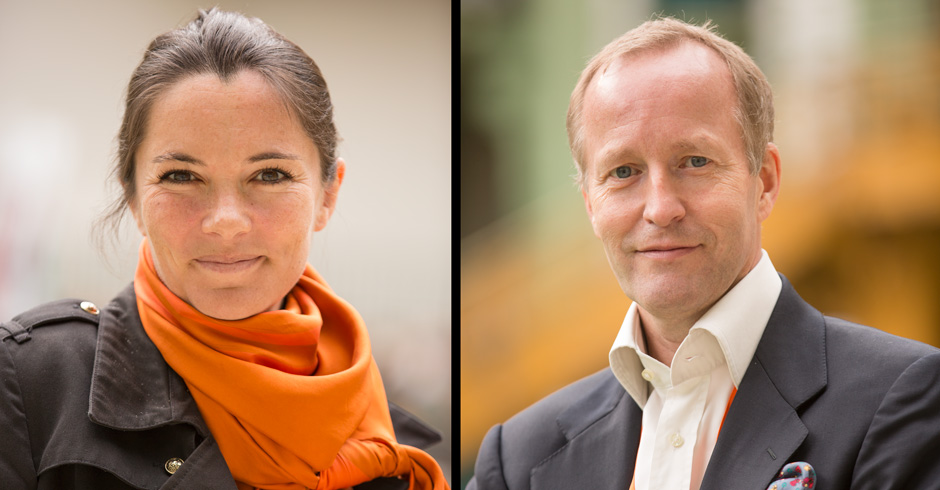
EQ was invited to speak with Hermès artisan, Laurent Goblet (above right) and Director of Hermès Equestrian Department, Marion Bardet (above, left), who were happy to answer a few of our questions and describe the extensive collaborative process that goes into the design and launch of a new Hermès saddle.
Do you approach the design of new products collaboratively?
MB: The new saddle, Cavale, is an example of collaboration. The initial collaborators were Laurent (Goblet) and Simon Delestre, a top international rider and partner of Hermès. Simon, who rides seven hours a day, helped to establish what is ideal for the rider and best for the horse.
Based on Simon’s initial input, Laurent will design a full-size prototype for testing, using the exact materials to be used in the final version. Additional feedback from the rider, veterinarians, and saddlery craftsmen and keen observation of the horse’s responses and movement determine the cycles of revisions. Just recently, Laurent finished a Cavale saddle for a Spanish rider, Pilar Cordon. Laurent said, “It is quite different from Simon’s, but it is still a Cavale. We will always need to make some revisions. Each horse and rider rides differently.”
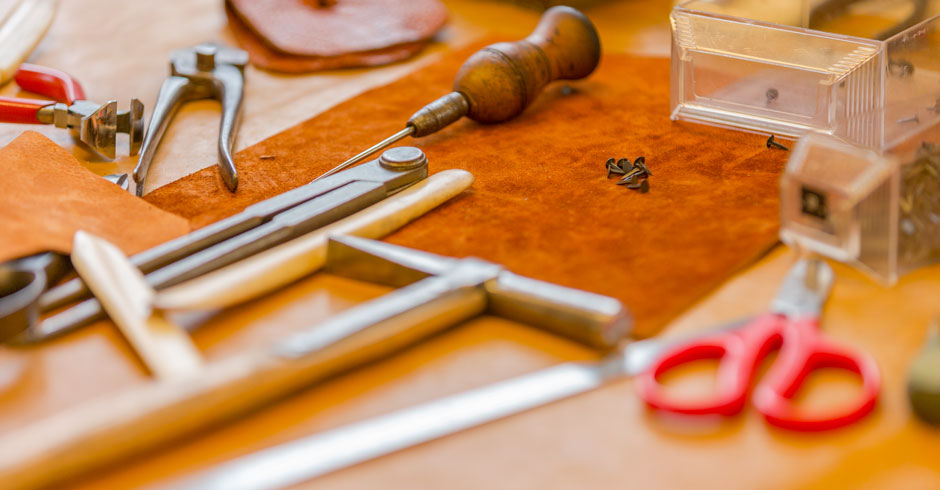
When designing a saddle, is the ultimate goal a perfect balance of form and function?
MB: Laurent will never do something unattractive! When he designs German reins he reinvents them, and they will be the most beautiful German reins you’ve ever seen!
LG: I have done this for 35 years, and it is practice, practice. I put the rider in the saddle and position the legs and back. This is the first part of a design. After the prototype, I follow the form and movement of the rider and integrate the technical functions a saddle needs to have. I have to listen to the rider, and the vets, and then incorporate the necessary qualities into something aesthetic. Designing a saddle is an evolution.
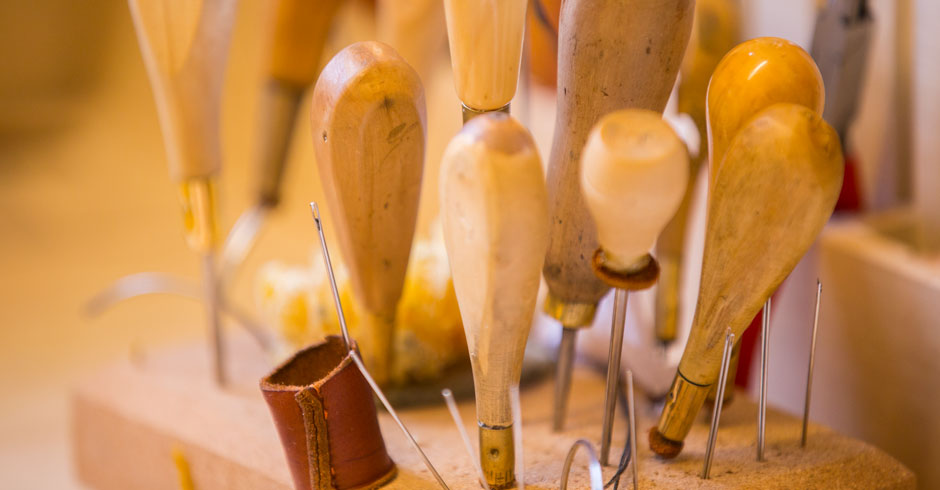
What are the most important criteria when designing a saddle?
LG: The balance of the rider. The comfort of the rider and horse, the contact between the rider and the horse, and the distribution of weight to avoid injury are all critical necessities. The saddle is an essential tool allowing contact between rider and horse.
What impact has technology had on the design and construction of an Hermès saddle?
MB: Laurent is always looking for new, innovative materials that enable Hermès to produce the exact same saddles with little variation for individual riders. Advances in memory foam are making inroads in that pursuit.

What makes Hermès products timeless?
LG: The quality of the materials. The quality of our leathers. There is one tannery in the world that is still producing our leather. You just have to touch it to recognize the superior quality. It is also the quality of the craftsmanship. In the case of our saddles, each saddle is made by one person, every aspect from A to Z.
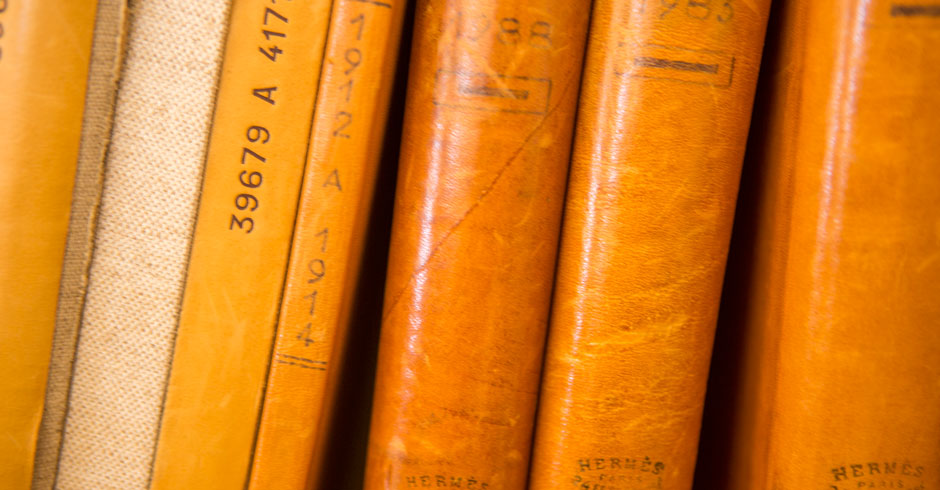
What are Laurent’s sources of inspiration?
MB: He was born with it! He loves it when he is asked to create something. He typically starts with existing functional qualities of a product and adds something new with enhanced functionality. He is always using qualities of the past and merging them with techniques of the future.

